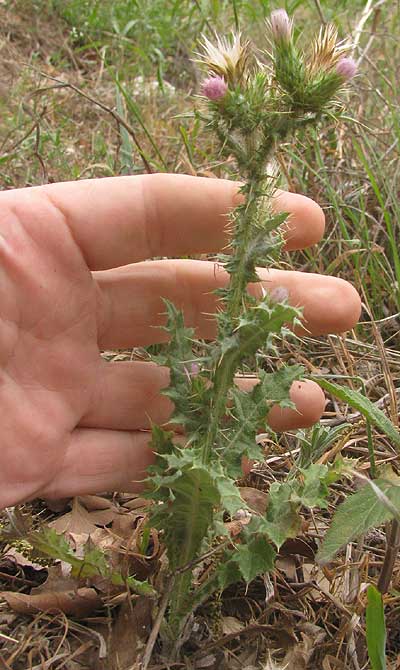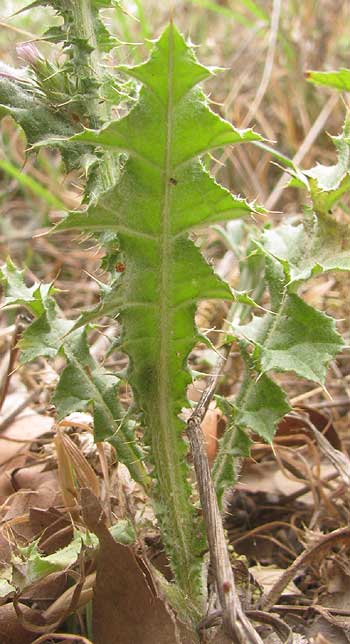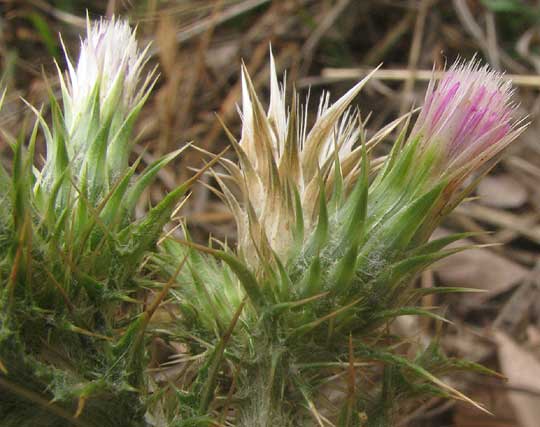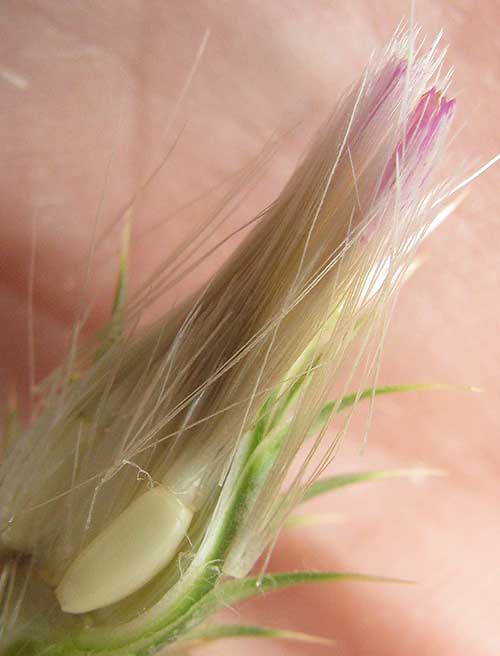Excerpts from Jim Conrad's
Naturalist Newsletter
from the May 25, 2014 Newsletter issued from the Frio Canyon Nature Education Center in the valley of the Dry Frio River in northern Uvalde County, southwestern Texas, on the southern border of the Edwards Plateau; elevation ~1750m (~5750 ft); N29.62°, W99.86°; USA
ITALIAN THISTLE
Right next to the Maltese Star-thistle stood another Mediterranean thistle, shown below:

That's a more normal thistle, one with large, stiff spines not only on the flower head's urn-shaped involucre but also the leaves. A shot of a spiny-margined leaf appears below:

At first I thought this plant was our similarly small, commonly occurring Texas Thistle, which you can compare by clicking on the link.
Notice that the Texas Thistle produces just one flowering head at the tip of each of its branches, while the current one clusters three or so.
Also, the Texas Thistle's involucral bracts are very distinctive, bearing short, slender spines and silvery markings on their flat surfaces, while this thistle bears completely different kinds of involucral bracts, as seen below:

Realizing that a new thistle species had turned up, a head was broken open, revealing a white, egg-shaped, future cypsela-type fruit atop which a ring of slender, white hairs arose, almost obscuring the cylindrical, disc-type corolla, shown below:

In that picture it's worth noting that the hairs, or "pappus bristles," are simple, not featherlike as they are in some thistle types. Also, the hairs arise from atop the broad head of the future fruit itself, not from a slender neck atop the fruit, which sometimes you see among other thistle kinds.
So, our new thistle often is known as the Italian Thistle. It's CARDUUS PYCNOCEPHALUS, introduced in ship ballast into several east-coast ports in the 1800s, but apparently not doing well there. However, now Italian Thistle has become a serious rangeland invasive in much of California, especially near the coast where it sometimes forms pure stands, both in full sun and in partial shade. Populations increase under grazing pressure as more palatable plants are eaten by livestock. A healthy population also seems to be establishing itself in central Texas.